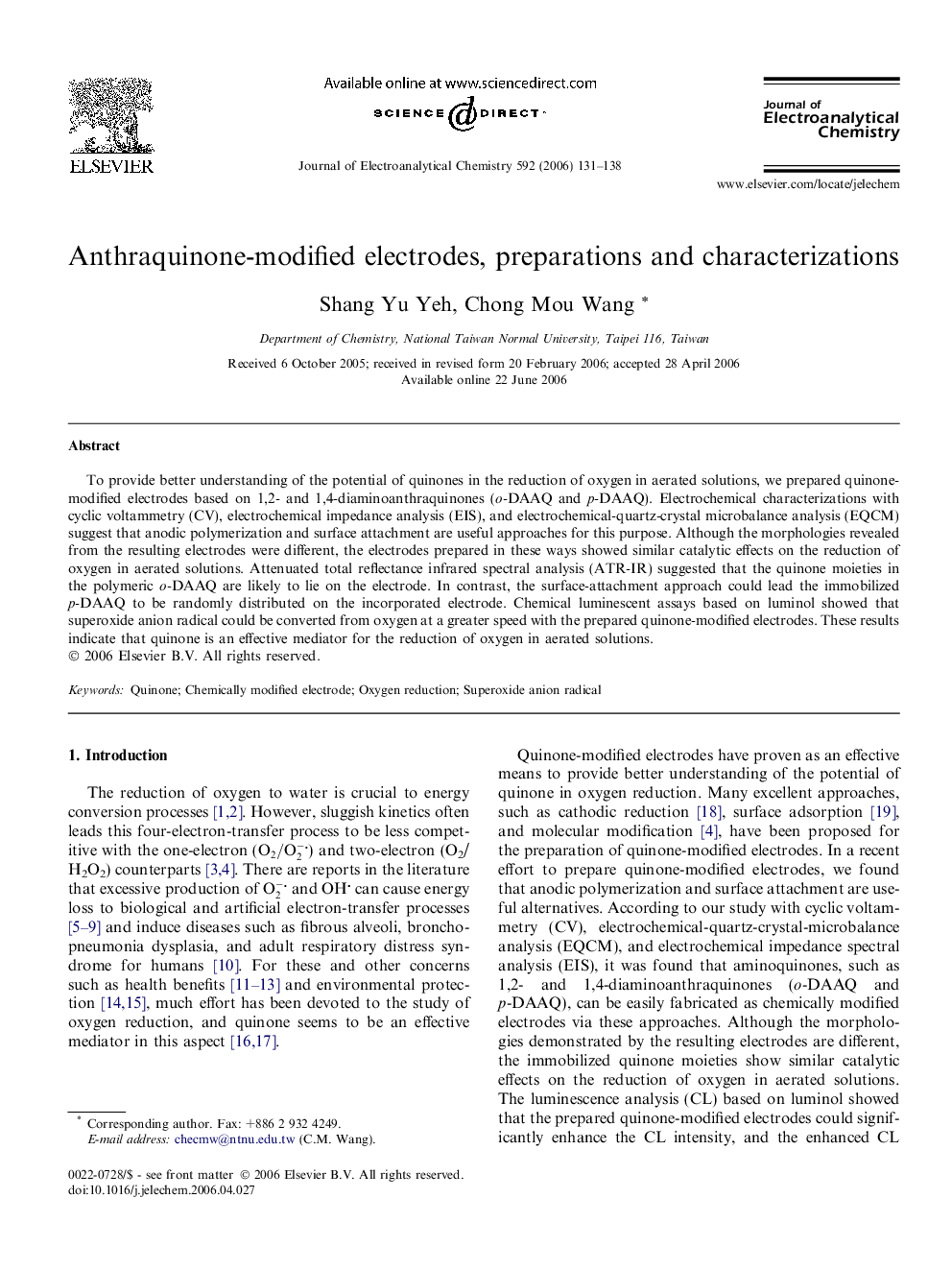| Article ID | Journal | Published Year | Pages | File Type |
|---|---|---|---|---|
| 221427 | Journal of Electroanalytical Chemistry | 2006 | 8 Pages |
To provide better understanding of the potential of quinones in the reduction of oxygen in aerated solutions, we prepared quinone-modified electrodes based on 1,2- and 1,4-diaminoanthraquinones (o-DAAQ and p-DAAQ). Electrochemical characterizations with cyclic voltammetry (CV), electrochemical impedance analysis (EIS), and electrochemical-quartz-crystal microbalance analysis (EQCM) suggest that anodic polymerization and surface attachment are useful approaches for this purpose. Although the morphologies revealed from the resulting electrodes were different, the electrodes prepared in these ways showed similar catalytic effects on the reduction of oxygen in aerated solutions. Attenuated total reflectance infrared spectral analysis (ATR-IR) suggested that the quinone moieties in the polymeric o-DAAQ are likely to lie on the electrode. In contrast, the surface-attachment approach could lead the immobilized p-DAAQ to be randomly distributed on the incorporated electrode. Chemical luminescent assays based on luminol showed that superoxide anion radical could be converted from oxygen at a greater speed with the prepared quinone-modified electrodes. These results indicate that quinone is an effective mediator for the reduction of oxygen in aerated solutions.
